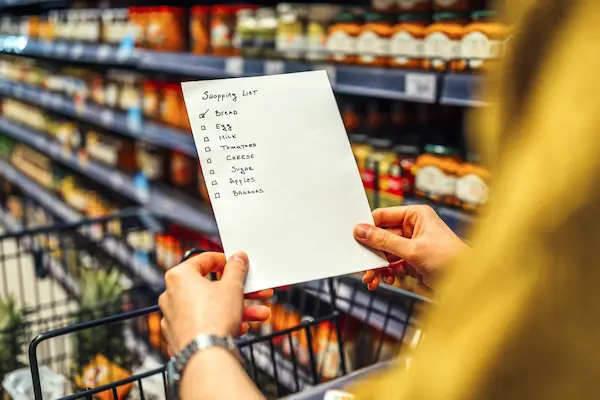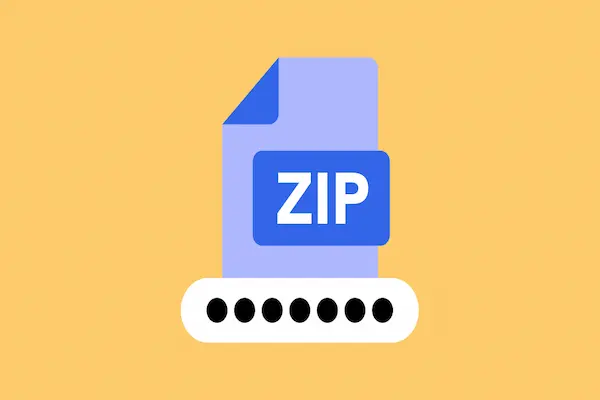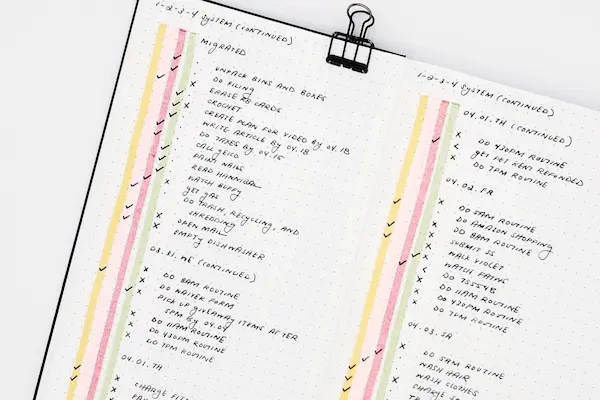Making a shopping list is a simple but powerful way to save time, money, and stress during your grocery trips. A well-organized list keeps you focused, prevents impulse buys, and helps you shop more efficiently by planning your purchases ahead of time. This approach reduces the chance of forgetting important items and speeds up your trip through the store.
When you create your list, it’s helpful to add items the moment you realize you need them. This way, your list stays accurate and complete without relying on memory. Organizing the list by store sections or categories also makes shopping faster and less frustrating. With these strategies, you can easily turn a basic list into a tool that works for your routine and budget.
Why Make a Shopping List

Making a shopping list helps you stay organized, save money, and reduce food waste. It keeps your grocery trips focused and helps you avoid buying things you don’t need. Using a list means you can track your spending better and plan purchases more carefully.
Benefits for Organization
A grocery list acts as a clear plan for your shopping. When you write down what you need, you avoid wandering aimlessly in the store. Organizing your list by store sections or meal plan helps you shop more efficiently.
You can keep a master list of staple items that you update each week. This saves time when preparing for shopping trips. A well-structured list also helps you remember non-food essentials, like cleaning supplies or toiletries, so you don’t have to make extra trips.
Saving Time and Money
Using a shopping list cuts down the time you spend in the store. Planning your route through the aisles means less backtracking and fewer impulse buys. This focused approach saves both time and money.
You are less likely to grab extras when you stick to your list. Avoiding impulse purchases can lower your grocery bill by 10-20%. Also, being specific about quantities or brands on your list helps you control spending and prevents overbuying.
Reducing Food Waste
Shopping from a list based on your actual needs helps prevent buying items you won’t use. If your list reflects meals you plan to cook, you’re less likely to buy too much or forget ingredients.
You can check your pantry and fridge before making your list. This stops you from buying duplicates or letting food expire. When you buy only what you need, you reduce wasted food and save money on spoiled items.
Essential Steps to Make a Shopping List
Creating an effective shopping list starts with understanding what you already have and what you really need. You will learn how to check your supplies thoroughly, organize your items by priority and category, and add exact amounts to avoid both overbuying and shortages.
Assessing Your Kitchen Inventory
Begin by checking your kitchen carefully. Look inside your pantry, fridge, freezer, and cupboards. Note down what you have in enough detail to avoid duplicates.
Focus especially on staple items like flour, rice, and canned goods. Also, check for perishables like milk or fresh vegetables that will run out soon.
Use a simple format like a checklist or a spreadsheet. Group items by type (e.g., dairy, produce). This will give you a clear view of what you already own and what needs replacement.
Prioritizing and Categorizing Needs
Once you know what’s available, decide which items are essential for your upcoming meals. Focus on ingredients that match your meal plan or weekly menu.
Prioritize items that you require frequently or need urgently to avoid run-outs. Separate them from non-essential or luxury items to stay on budget.
Organize your list into categories such as Produce, Meat, Dairy, Pantry, and Frozen. This grocery list format saves you time by grouping similar items close together in the store.
Use bullet points or tables to keep the categories clear. This helps prevent missing items and makes shopping more efficient.
Adding Quantities and Specifications
Be specific about how much of each item you need. Include exact amounts, such as “2 lbs chicken breast” or “1 gallon milk.”
Write down product details when necessary—for example, “whole wheat bread” instead of just “bread,” or “organic spinach” if that matters to you.
Quantities help avoid waste and extra trips. They also control your budget by removing guesswork.
Consider how long the item will last. Buy in bulk for non-perishables you use often, but only small amounts for fresh items to keep them from spoiling.
Using a clear format with quantities and specs improves accuracy and speeds up your shopping trip.
Meal Planning and Its Role
Meal planning helps you decide what to eat for the week and makes grocery shopping easier. It saves time, reduces food waste, and keeps your budget in check by focusing on exactly what you need.
Planning Weekly Meals
Start by choosing meals for breakfast, lunch, and dinner for each day. Consider your schedule and how much time you have for cooking. Include simple recipes when you’re busy and leftovers on some days to save prep time.
Write down each meal clearly to avoid guessing later. Think about balanced portions from different food groups, like proteins, vegetables, and grains. This helps ensure you eat healthy throughout the week.
Translating Meal Plans into Grocery Items
After you finalize your meal plan, list the ingredients needed for all meals. Organize the list by categories like produce, dairy, and pantry staples to make shopping faster.
Check your kitchen first to avoid buying things you already have. Use quantities from recipes to buy the right amounts, which helps cut down on waste.
Keep your grocery list digital or paper-based, whichever you use, and update it as you add or remove meals. This makes shopping more efficient and helps stick to your budget.
Choosing the Right Shopping List Format
Picking the right format for your shopping list can make your grocery trips smoother and more organized. Whether you prefer paper or digital tools, using the right method helps you keep track of what you need without confusion. You can also find templates that fit your style and save time setting up your list.
Paper Lists vs Digital Solutions
Paper lists are simple and easy to use. You can write down items quickly and cross them off as you go. Using a free shopping list template on paper helps keep your list neat and organized by categories, like produce or dairy.
Digital solutions offer flexibility. You can update your list on the go using your phone. This means you can add items as soon as you remember them. However, digital lists need a charged device and sometimes an app. If you lose internet connection, some apps still work offline, which is helpful.
Choose paper if you enjoy physically checking off items. Pick digital if you want to avoid losing your list and prefer updating it anytime.
Using Apps and Online Tools
Shopping list apps can save you a lot of time. Many apps let you create lists based on your planned meals or past shopping habits. You can also find free grocery list templates inside some apps, which you can customize.
Apps often organize items by store layout, making your trip faster. They may notify you of deals or allow you to clip coupons. You can also share lists with family members, so everyone knows what to buy.
Make sure you pick an app that fits your phone and habits. Some apps are simple, while others come with many features like barcode scanners or voice entry.
Templates for Quick Setup
Using a shopping list template saves you from starting from scratch. You can find free grocery list templates online in PDF or editable formats. These templates usually divide items into sections like fruits, meats, and household supplies.
Templates help you remember common groceries you might forget. You can print multiple copies or fill them out digitally. Some templates are designed to be reusable, so you just cross things off and add new items each week.
If you want fast setup, download a free shopping list template and adjust it to your needs. This helps keep your list clear and efficient for every shopping trip.
Structuring Your List for Efficient Shopping
Organizing your shopping list can save time and reduce stress during your trip. When you arrange your list thoughtfully, you avoid backtracking in the store and forget fewer items. A clear structure also helps keep your shopping focused and efficient.
Grouping by Grocery Store Aisle
Start by sorting your items based on where they are located in the store. Group foods like produce, dairy, meats, and dry goods separately. This way, you move through the store in a logical flow, cutting down on extra walking.
For example:
- Produce: fruits, vegetables
- Dairy: milk, cheese, yogurt
- Meats: chicken, beef, fish
- Dry Goods: pasta, rice, canned items
If you shop at the same store regularly, note its layout and adjust your list accordingly. This grocery list format will help you stay organized and speed up your shopping trip.
Sample List Categories
Using clear categories helps make your list easier to read and use. You can divide your list into main sections like this:
| Category | Examples |
|---|---|
| Produce | Apples, carrots, spinach |
| Meat & Seafood | Ground beef, salmon |
| Dairy & Eggs | Milk, eggs, cheese |
| Pantry Staples | Rice, canned beans, spices |
| Frozen Foods | Peas, frozen berries |
| Bakery | Bread, bagels |
| Household Items | Paper towels, cleaning supplies |
| Snacks & Beverages | Nuts, juice |
Keep quantities clear with each item. For instance, write “4 apples” instead of just “apples”. This avoids confusion whether you write your list by hand or use a to-do lists app.
Keeping a Master List
Maintain a master grocery list of commonly used items. This list stays updated with essentials you frequently buy, like cooking staples or snacks. When planning your weekly shopping, start with this master list.
You can keep your master list on paper, a whiteboard, or a digital note. Review it often to add or remove items based on what you already have. This prevents buying duplicates and helps create weekly grocery lists faster.
Use your master list as a base to customize each week’s to-do lists, adjusting for your meal plan, sales, or special events. This method keeps your grocery shopping organized and efficient long-term.
Popular Categories and List Ideas
Organizing your shopping list by categories can save time and help you avoid forgetting important items. Focus on essential foods, protein sources, and treats to create a balanced and practical list. Use specific groups to keep your shopping quick and efficient.
Staple Foods and Basics
Staple foods are items you’ll use often in cooking and meal preparation. This includes bread, rice, pasta, and canned goods like beans or tomatoes. These items form the foundation of many meals and should be regularly stocked in your pantry.
You should also include dairy products such as milk, cheese, yogurt, and eggs. These items provide important nutrients and are part of many breakfast and dinner recipes. Keeping a few baking essentials like flour, sugar, and cooking oils on your list is wise for baking or cooking.
Organize this section by what you use most, and check expiration dates to avoid waste. Adding fresh produce like potatoes, onions, and garlic can enhance your meals without taking much space.
Meats and Proteins
Including a variety of meats and proteins will help you meet your dietary needs. Common options include chicken, beef, pork, and fish such as salmon or tuna. You might also want to add deli meats like ham or turkey for sandwiches and quick meals.
If you prefer alternatives, consider tofu, tempeh, or plant-based burger options. These can be good substitutes if you want to reduce meat consumption.
When listing meats, pay attention to portion sizes and the types you regularly cook. Buying in bulk and freezing portions can save you trips to the store. Organize your list by fresh or frozen options to make shopping smoother.
Snacks and Desserts
Snacks and desserts add variety and enjoyment to your grocery list. Popular snacks include nuts, pretzels, popcorn, and chips. These provide convenient options for quick energy or social occasions.
For desserts, consider items like cookies, ice cream, or baked goods such as muffins and pies. Keeping a few sweet treats on hand is useful for occasional indulgence or guests.
Balance these choices with healthier snack options like dried fruit or granola bars. You can group snacks and desserts together but separate healthier and indulgent options to stay mindful of your choices.
Maximizing the Use of Shopping List Templates
Using a shopping list template can make your shopping trips quicker and more organized. You can choose from printable lists or digital templates that connect with others. Both options help you avoid forgetting items and reduce waste.
Printable Grocery Lists
A printable grocery list lets you write down everything you need before you go to the store. You can find free printable grocery lists online that come in simple, clear designs. These lists often have categories like fruits, dairy, and snacks.
Printing your list allows you to carry it easily and check off items by hand. It works well if you prefer paper or don’t want to use a phone while shopping. You can reuse the same format weekly by printing new copies or filling in digital versions before printing.
You can also customize printable lists by adding your common grocery items or notes like “organic only.” This helps keep your trips faster and your shopping focused.
Online and Shareable Templates
Online templates like those in Google Sheets let you build a smart grocery list that updates in real time. You can use free templates where you select items from dropdown menus and add quantities. The list can automatically group items by category, showing you a neat summary.
Because it is online, you can share the list with family or roommates. Everyone can add or remove items, so no one forgets what to buy. The list syncs for all users instantly, making group shopping easier.
Online lists can also include checkboxes to mark items once you’ve added them to your cart. This digital tracking helps prevent buying duplicates or missing important items. Some templates let you track costs or change units for more detailed planning.
Tracking Your Spending and List Updates
To shop efficiently, you need to keep a close eye on your budget and regularly update your shopping list. Managing both helps you avoid overspending and reduces the chances of buying things you don’t need.
Monitoring Budget While Shopping
Keep track of your spending as you shop by using a simple method like noting prices in your list or a calculator. You can use a spreadsheet or a budgeting app to add prices as you go. This helps you see your running total and avoid going over your set budget.
Focus on essentials first to control costs. Mark items as you add them to your cart to prevent duplicate buys. If a product is more expensive than planned, consider skipping it or choosing a cheaper alternative. Staying aware of prices helps you stick to your limits and make smart choices quickly.
Keeping Your List Up-to-Date
Before you shop, review your current supplies at home. Cross-check what you have so you avoid buying extra items that will just sit unused. Add missing essentials to your list to prevent last-minute trips or impulse buys.
After shopping, update your list by removing purchased items and adding new needs for the next trip. Make use of categories like produce, dairy, or pantry staples to keep your list organized. Regular updates improve your shopping efficiency and help you tailor your list to your actual needs.





